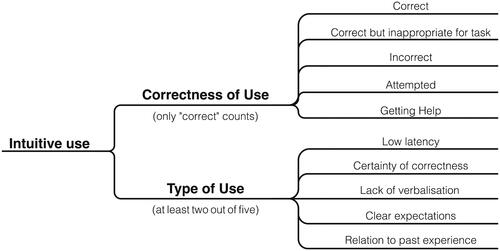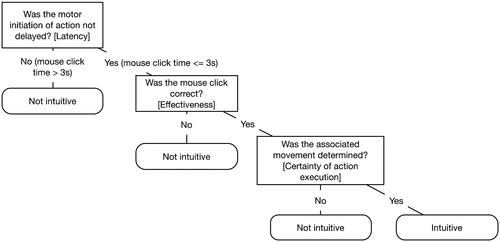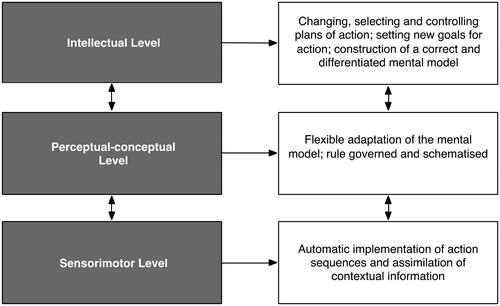Figures & data
Figure 1. QUT video coding scheme after Blackler (Citation2006), adapted from Reinhardt et al. (Citation2018).

Figure 2. Decision tree to differentiate between intuitive and non-intuitive interactions using the CHAI method (Reinhardt et al., Citation2018).

Table 1. Characteristics and measures of intuitive use as proposed by previous research (see text for abbreviations)
Figure 3. Relationship between levels of regulation and functions based on Hacker (Citation1986).

Table 2. Alternative terms for intuitive and reflective processing, found in various two-process theories (cf. Horstmann, Citation2012; Stanovich et al., Citation2014).
Table 3. Characterising features of Type 1 (i.e., fully intuitive) and Type 2 (i.e., fully reflective) processes (cf. Evans & Stanovich, Citation2013; Horstmann, Citation2012).
Figure 4. Tripartite model of the mind according to Stanovich et al. (Citation2014), supplemented with corresponding levels of regulation from Hacker’s (Citation1986) action regulation theory. See text for a description of the processes involved.

Figure 5. Preattentive metacognitive processes in intuitive use following the double-response paradigm of the tripartite mind (see Ackerman & Thompson, Citation2017; Thompson et al., Citation2011) and the fluency-affect model of intuition (see Topolinski, Citation2011; Topolinski & Strack, Citation2009).

Table 4. Implications of the new measurement definition of intuitive use (overview).
Table 5. Defining characteristics and correlates of intuitive use according to the new measurement definition of intuitive use.
